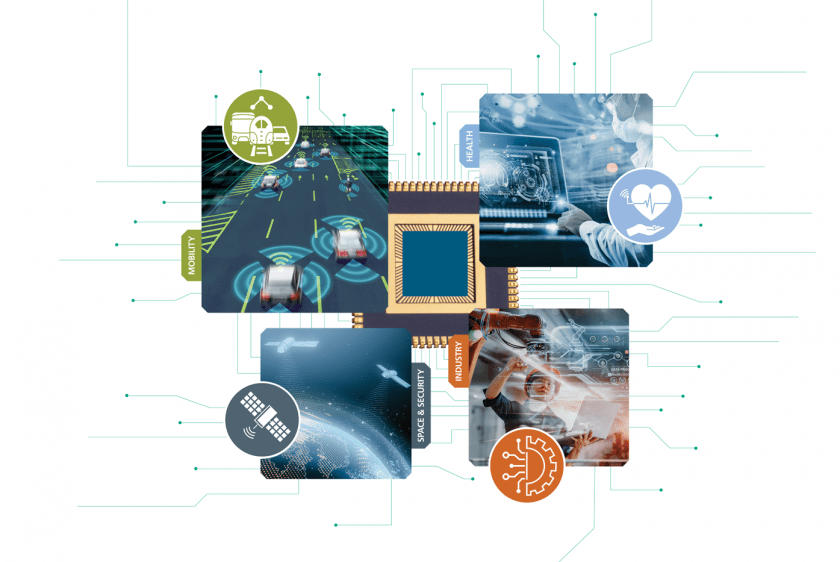In the modern world, having a strong microelectronics and semiconductor industry is critical for technological resilience. A robust microelectronics and semiconductor industry reduces Europe’s dependency on foreign supplies and offers smooth technological progress.
This case study was conducted with the inputs of CEA (as a Research Infrastructure [RI] provider) and Fraunhofer-Gesellschaft (as a Technology Infrastructure [TI] provider) to compile the best practices and barriers of collaboration on microelectronics and semiconductors, consequently offering recommendations to further the efforts in this area.

Best practices and barriers
One example is ASCENT+, a Horizon 2020-funded collaboration consisting of 15 partners and providing free European-wide access to nanotechnology research infrastructures. Running since 2020, with a smaller network from 2015 to 2019, ASCENT+ has supported 41 projects and produced 24 academic papers in its first 18 months.
Challenges to collaboration include:
- European funding only supports transnational projects, requiring local companies to work with infrastructure abroad, which strains local partnerships.
- Industry engagement is challenging as many facility scientists lack the skills or culture to market services effectively, and the value proposition is not clear to the industry.
- Overheads and amortisation costs are not fully covered, requiring complex multi-source funding, which complicates priorities and liability management.
- Hands-on access is hard due to the need for training, scheduling conflicts, and avoiding disruptions to regular facility activities.
Recommendations
Recommendations for overcoming the challenges in this area include:
- TI support for companies in finding tailored solutions, coordinating expertise and providing access to skills and equipment.
- Developing a catalogue based on common user needs to clarify and strengthen the value proposition.
- Facilitating joint development between TIs, RIs and academia by providing test structures, standardised electrical test layouts for quick material/structure testing and industry-ready PDK (process design kits) for seamless prototyping of innovative designs.
Collaboration between TIs and TIs is key to advancing Europe’s microelectronics sector. By improving access and fostering innovation, Europe can strengthen resilience and drive growth.






